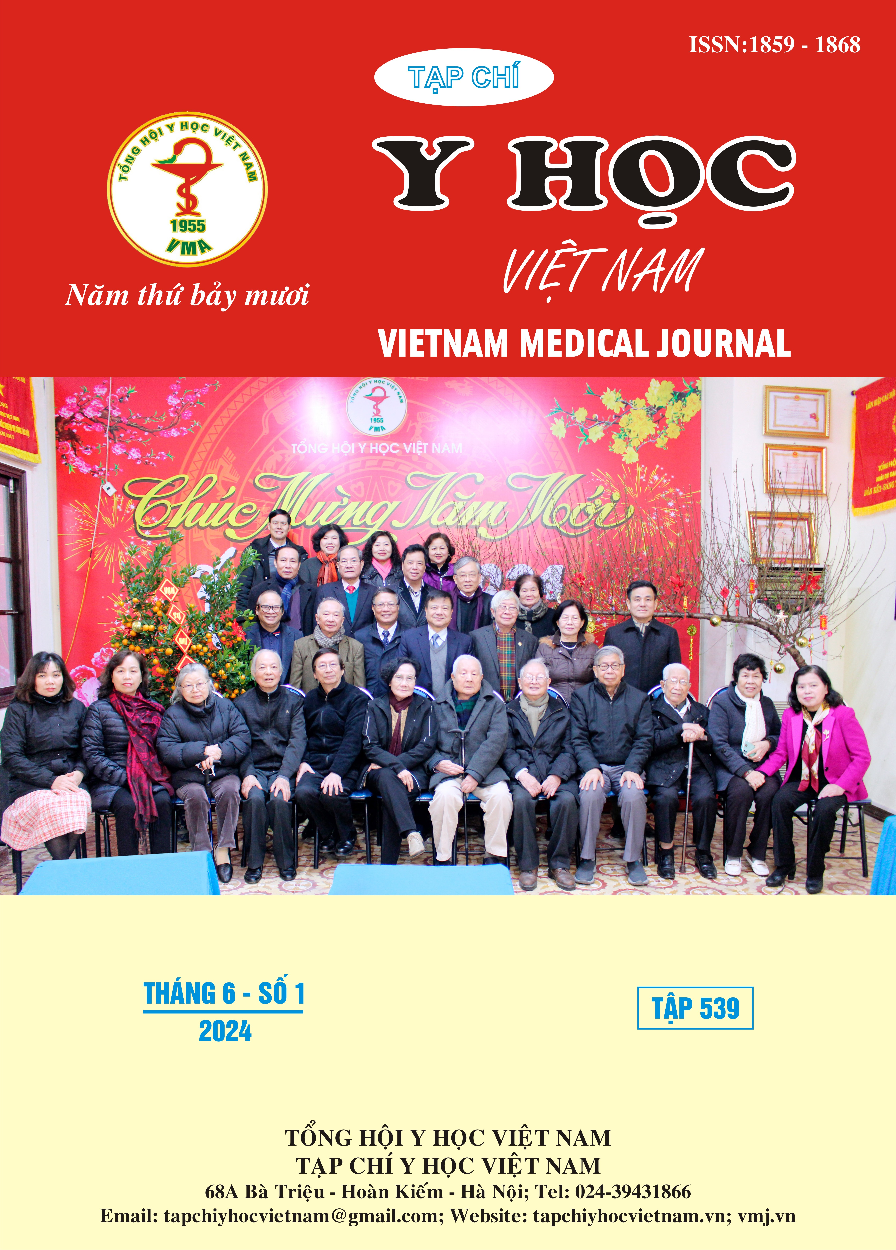CHARACTERISTICS OF TONGUE DIAGNOSIS ON STUDENTS WITH EXAM ANXIETY DISORDERS IN TRADITIONAL MEDICINE UNIVERSITY OF MEDICINE AND PHARMACY AT HO CHI MINH CITY
Main Article Content
Abstract
Introduction: Exam anxiety, a type of situational anxiety, is characterized by somatic, cognitive, and behavioral symptoms that occur before or during an exam. Exam anxiety is common among medical students. In Traditional Medicine, anxiety belongs to “Yu Zheng”, treatment of “Yu Zheng” in Traditional Medicine is increasingly proven to be effective. However, for a good treatment, it is necessary to make an accurate diagnosis. Characteristics of tongue diagnosis is an important diagnostic method in Traditional Medicine. Objects: characteristics of tongue diagnosis on students with exam anxiety disorders in traditional medicine University of Medicine and Pharmacy at Ho Chi Minh City. Methods: A cross-sectional descriptive study. Collecting 330 tongue samples from students majoring in Traditional Medicine at the University of Medicine and Pharmacy in Ho Chi Minh City with symptoms of Anxiety Disorder according to the DASS-21 scale during the high exam period (February-April 2023), and then analyzing the characteristics of Tongue through an automated diagnostic image analysis system (ATDS). Results: The male: female ratio is 67% and 33%, respectively. Most had average BMI. The purple tongue (43.3%), pale pink tongue (27.6%), pale purple tongue (16.1%), pinkish tongue (9.7%), pale tongue (3.3%). Blood stasis appeared in 8.2% of the samples studied. White coating 31.5%, yellow coating 3%, and no subjects had yellow white moss and black gray moss. Thin tongue (55.8%); tooth-market tongue 10.9%; fissured tongue (60%); prickles tongue 26.7%. moist coating (69.1%), drying coating (47%), little water coating (17.7%); thick coating 19.1% thin coating 4.5%; no appearance of dirty, peeling coating. Conclusion: The main characteristics of the diagnosis are purple-tinged tongue, thin tongue, tongue fissures, white tongue moss, and laxity.
Article Details
Keywords
Diagnosis, anxiety disorder, ATDS.
References
2. Nuôi Nguyễn Văn, “Các rối loạn lo âu,” Tâm thần học, NXB Y học, 2005, tr. 78–106.
3. Thắng P. Đ., Mẫn B. P. M., Đàn N. V., and Thường T. T. D., “Khảo sát tình trạng Rối loạn lo âu thi cử của sinh viên năm thứ 1 khoa Y học cổ truyền,” Nghiên cứu Y học, vol. 4, no. 24, tr. 130–134, 2020.
4. Trúc T. T., Thị B., and Hân H., “Khác biệt giới tính trong các vấn đề sức khỏe tâm thần và hành vi nguy hại sức khỏe ở vị thành niên Việt Nam,” Nghiên cứu Y học, vol. 20, no. 1, tr. 148–154, 2016.
5. Uyên P. T. T., Thủy H. B., Anh T. N. T., and Thủy N. T. T., “Đánh giá mức độ stress, lo âu, trầm cảm của sinh viên Dược chính quy Đại học Y dược Thành phố Hồ Chí Minh,” Tạp chí Y học TP.Hồ CHí Minh, vol. 20, no. 2, tr. 217–225, 2016.
6. M. J. S. T. W. Changchun; Shaanxi, “Study on correlation between irritable bowel syndrome complicated with anxiety and depression state and tongue coating -,” Clin. Res. Pract., pp. 120–1123, 2022.
7. T. G. Gerwing, J. A. Rash, A. M. Allen Gerwing, B. Bramble, and J. Landine, “Perceptions and Incidence of Test Anxiety,” Can. J. Scholarsh. Teach. Learn., vol. 6, no. 3, 2015, doi: 10.5206/cjsotl-rcacea.2015.3.3.
8. 陈文姬 and 陈文垲, “200例抑郁症患者舌象研究,” J. Nanjing Univ. Tradit. Chinese Med., vol. 22, no. 1, pp. 16–17, 2006.


